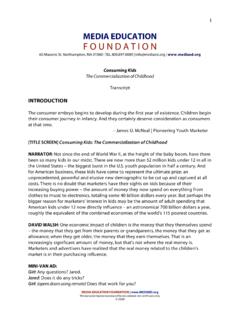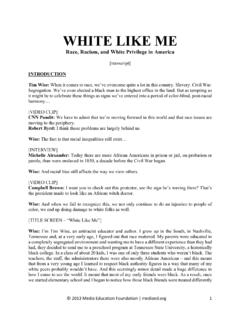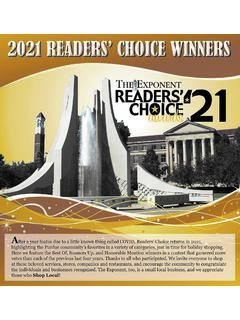Transcription of Advertising at the Edge of the Apocalypse [Transcript]
1 2017 Media Education Foundation | 1 Advertising AT THE EDGE OF THE Apocalypse Featuring Sut Jhally [ transcript ] Introduction Sut Jhally: Advertising surrounds us everywhere, and is now as much a part of our daily lives as the air we breathe. But most of us think it has no real effect on us at all, that we're too smart to be taken in by it, that we can just ignore it, click past it or block it from working on our minds. But no matter how much we think we can outsmart it, there's no getting around the fact that Advertising is the dominant storytelling force of our time. Over the past 100 plus years, more thought, more effort, more creativity, more time, more attention to detail and more overall money has gone into Advertising than any other campaign in human history to mold consciousness.
2 The result has been a non-stop flow of ever-more sophisticated and visually stunning and powerful commercial appeals -- expertly crafted stories that tap into our deepest fantasies and desires and speak to the very core of our emotional lives, telling us over and over again that happiness and satisfaction are linked to consumerism and the consumption of things. So, the real questions we have to ask are about the larger, cultural impact of the stories of Advertising . About how these stories have come to shape our sense of ourselves, our values as a society and how the consumer mindset that Advertising celebrates is feeding an endlessly accelerating cycle of consumption that is literally pushing the planet to the brink of collapse.
3 My name is Sut Jhally, and for the last 30 years I've been looking at how Advertising as a storytelling system shapes the perceptions, values and priorities of those of us who live in consumer capitalist societies. One of the most striking things I've come to realize is that very few of us actually stop to think about how it works, and what it's really doing to us as a society. The visionary author Marshall McLuhan once remarked that media images and messages have become so pervasive a part of our cultural environment that they often disappear from view. [Archive video] Marshall McLuhan: It's like the fish in the water. We don't know who discovered water, but we know it wasn't the fish.
4 A pervasive medium, a pervasive environment, is always beyond perception. Jhally: And this is clearly the case with Advertising . Like the proverbial "fish in the water" we are so immersed in Advertising that we hardly even notice it anymore. Along the way, 2017 Media Education Foundation | 2 we've lost sight of just how completely and methodically corporations have taken over the culture. The Commercial Takeover of the Culture Jhally: Over the years, Advertising has come to literally colonize the culture, taking up more and more physical space, creeping into virtually every nook and cranny of the visual and audio landscape, driving out other possible ways of thinking and being as it competes for our attention non-stop.
5 It's an imperialist project from which there's no escape. Even if we were to somehow give up our smartphones and other screens, Advertising in corporate brands would be impossible to avoid -- confronting us at every turn as we make our way through the spaces and places of daily life. And the sheer amount of time, talent and money that businesses have expended to accomplish this has been nothing short of astonishing. Corporations now spend more than $200 billion a year on Advertising in the alone. A figure that s greater than the total GDP of many countries. Globally, the total amount spent on Advertising is $570 billion a year. These are not just like other media messages. They are carefully and meticulously crafted by the best creative talent the society provides.
6 For instance, TV ads now cost much more to produce than the programming that surrounds them. So, 60 minutes of television programming now costs an average of about $4 million to produce -- about $33,000 for every 30 seconds. In comparison, producing a 30-second network ad costs about $352,000, ten times as much, translating to a cost of $42 million to make 60 minutes of ad content. That's just the average. When you realize that more and more 30-second spots now cost over a million dollars to produce on their own, it starts to become clear just how much time and attention goes into putting ads together. [Making of Victoria s Secret ad] Victoria s Secret model: We walked into this beautiful room, so old, with all marble arches, and there's rose petals all over the floor.
7 Victoria s Secret model: We shoot for five days, all for 30 Jhally: No detail is left to chance. In fact, if you wanted to compare Advertising to anything, it would be the biggest blockbuster Hollywood films, like the Transformers franchise. Actually, a number of the biggest directors in Hollywood are now actually making ads in between making movies. For example, Michael Bay, the director of the Transformers films has shot many commercials, including Victoria's Secret, Budweiser and Nike. Even Martin Scorsese, the legendary Hollywood director of movies like Taxi Driver and Goodfellas, has made ads for Chanel and Dolce & Gabbana, starring A-list Hollywood actors. [Dolce & Gabbana ad] Ad narrator: Dolce & Gabbana.
8 The one. 2017 Media Education Foundation | 3 Jhally: The amounts involved in producing some ads are just mind-numbing. Baz Luhrmann, the director of the Oscar-winning film Moulin Rouge, made a short three-minute film for Chanel No. 5 that starred Nicole Kidman and cost a staggering $42 million -- for a commercial! But actually, the amount spent on producing ads are dwarfed by the billions of dollars corporations spend on making sure they get seen. The main way they've done that is by taking over the media and essentially turning them into a delivery system for their ads. Just look at where the money comes from to support various media. Broadcast television and radio rely on Advertising revenue for pretty much 100% of their income, so their main function, the actual purpose of TV shows is to get our attention so it can be sold to advertisers.
9 Similarly, newspapers get roughly 80% of their total revenues from Advertising , and as the content moves online, that figure is growing. The magazines rely on paid Advertising for roughly half of their income. That's one of the biggest reasons why, over the years, commercial media outlets have been allotting more and more time and space to Advertising , and allowing actual programming and editorial content to shrink. For example, on television, in 1952, ads accounted for about 13% of the time. Today, that figure has doubled so that Advertising now makes up about a quarter of what is on television, and much more on some channels. But Advertising isn't just crowding out content.
10 More and more, it's actually making its way into content, thanks to the trend of product placement. Sometimes this is done by having the product featured in the scene. Other times, it's by having the product become part of the dialogue. [ Hawaii Five-O Subway product placement] Man: I m trying to eat smarter, brother. Woman: Shrimp? Perfectly healthy. Man: Not the way I make em. But this Subway sandwich? Sweet onion chicken teriyaki with jalape os and banana peppers. Bam! Jhally: And sometimes, the stars of the show actually pitch the product itself, talking about what makes it so great. [ Bones Prius product placement] Man: How about nitwit or doofus? [car beeps] What was that?

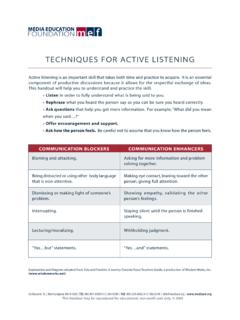
![Tough Guise 2 [Official Transcript] - Media Ed](/cache/preview/c/3/b/5/2/d/3/e/thumb-c3b52d3e6a3437c17d6d8ad6485bd936.jpg)



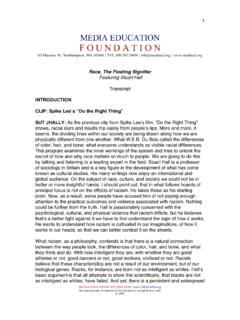
![Requiem For The American Dream [Transcript]](/cache/preview/a/b/8/4/f/8/1/2/thumb-ab84f812664524b6923d6df2929c06cf.jpg)
